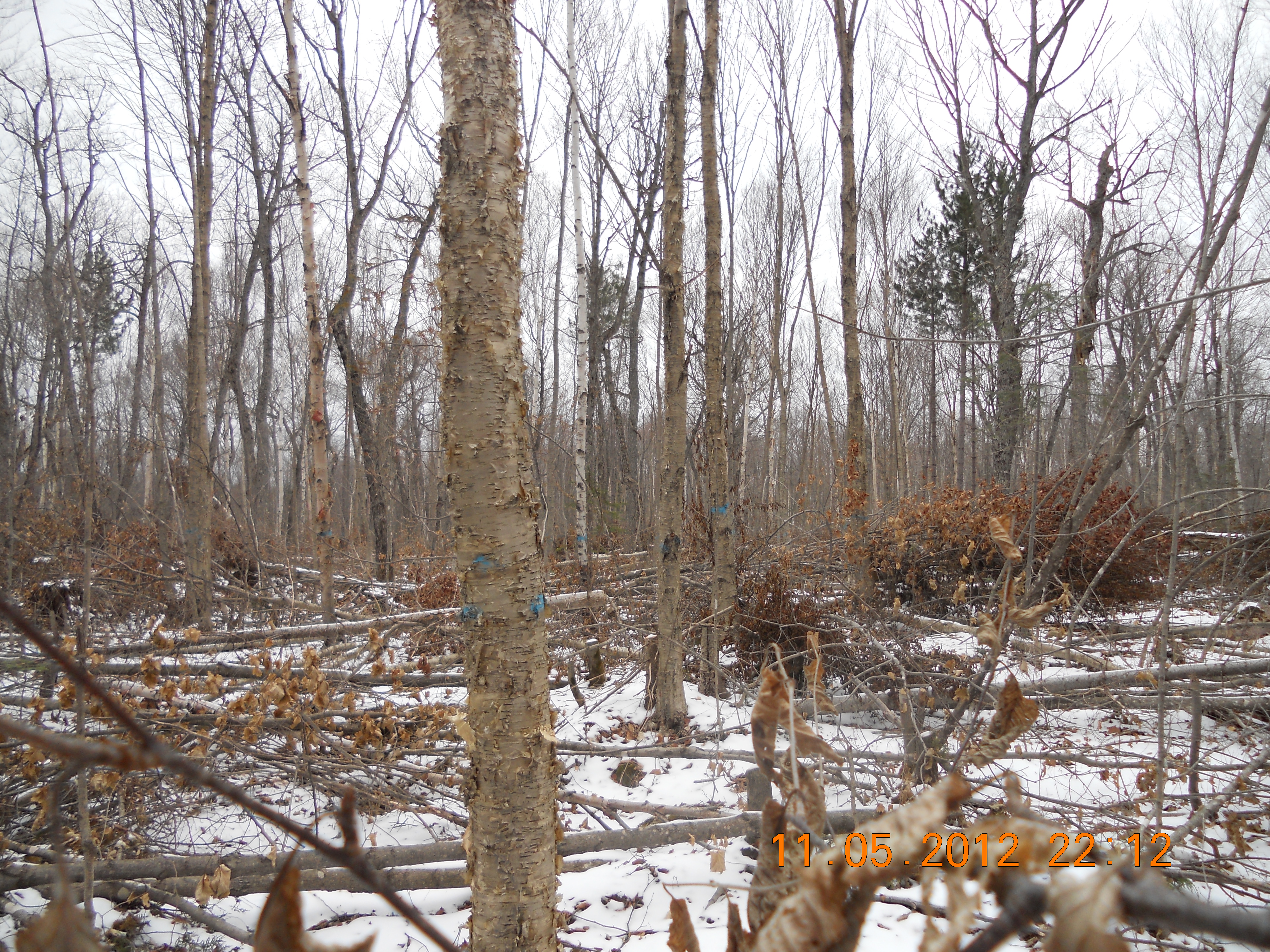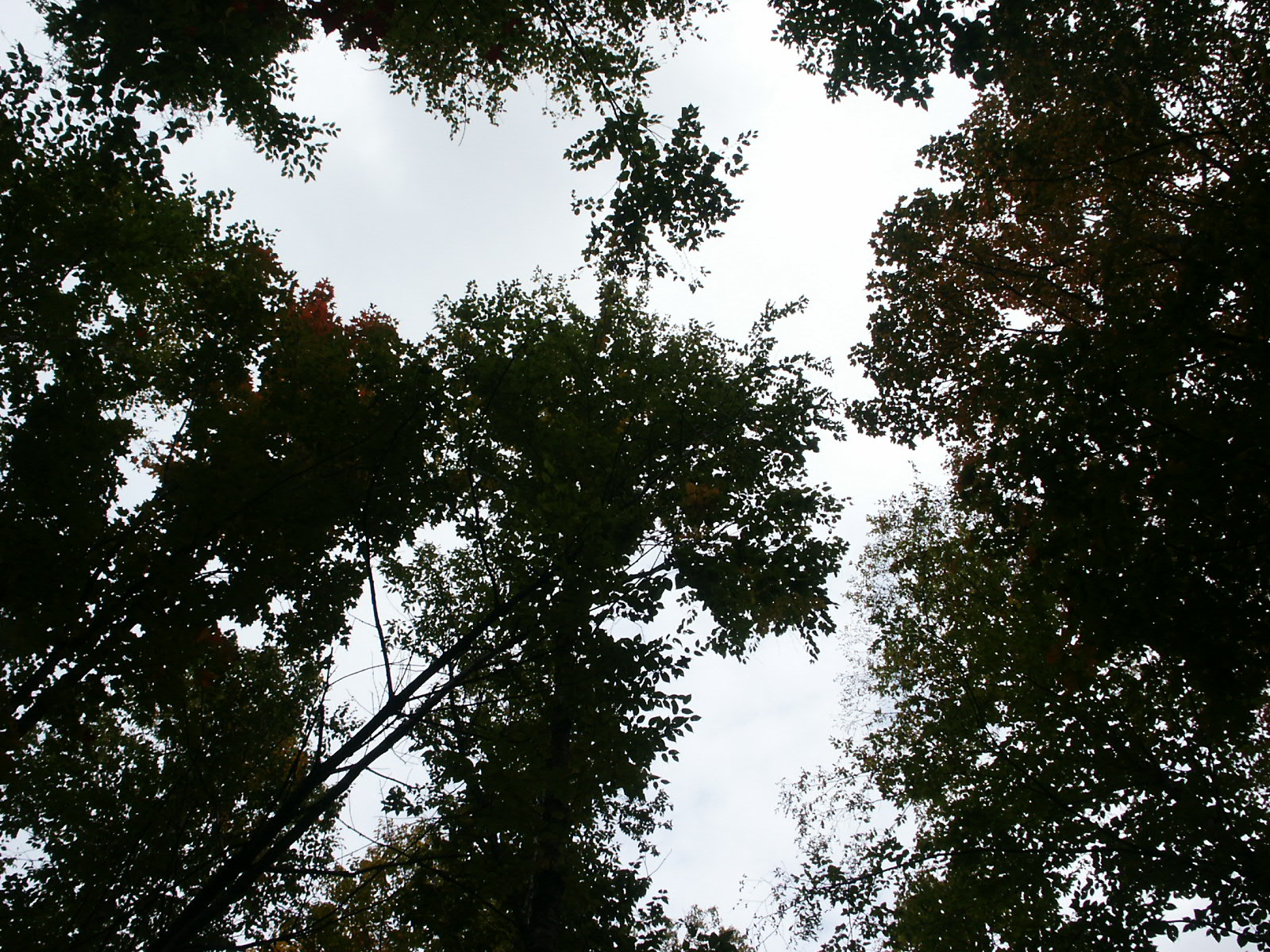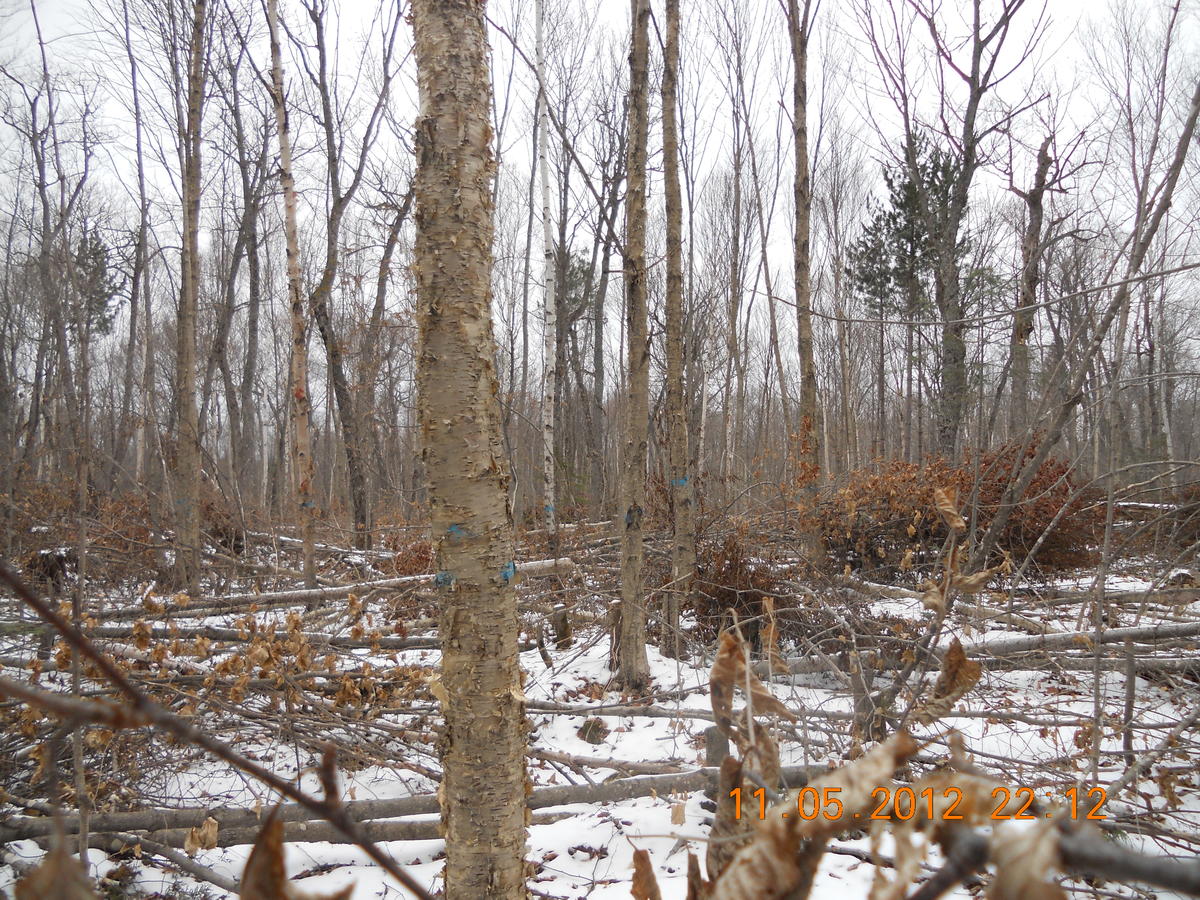Overview
Immature birch typically with a sparse, poor quality overstory comprised of 100 year old sugar/red maple and yellow birch. Stands will also have pockets of pin cherry and isolated softwood species (White spruce, white pine, cedar, balsam fir). Approximately 1000ha in various locations North and East of Sault St. Marie, On, Canada, in the Great Lakes St. Lawrence Forest type. Stands vary in size from 2ha to 75ha. (Note: Mapped location is the general region, not a specific treatment site.)
Silviculture Objective(s)
Thin stands of overstocked white / yellow birch pole sized regeneration to maximize stem growth and quality development. Thinning will maintain high quality white / yellow birch stems regenerating from past harvesting and silviculture activities on the Algoma Forest. Treated stands are being managed for veneer and high quality logs for future harvest. Selective thinning creates openings around crowns of selected dominant and co-dominant crop trees allowing crown development.
Pre-treatment stand description and condition
Stand establishment and management history:
Yellow birch was once an abundant tree species on the Algoma Forest. Harvesting in the tolerant hardwood stands during the 1970’s on the Algoma Forest concentrated heavily on high grade harvests or strip cutting with follow-up blading and planting (White Spruce, Red Pine, White Pine). This intensive silviculture was marginally successful at best throughout much of the sites treated north of Sault Ste Marie due to lack of subsequent tending. Often these “renewed” sites would regenerate heavily with birch due to exposed mineral soil, available sunlight and large canopied, low quality seed producing white/yellow birch that were retained at time of harvest. Thirty to forty years later, resulting stands are fully stocked with good quality 4-8” (10-20cm) diameter birch. Birch trees under these conditions are typically very crowded with small, underdeveloped canopies.
Pre-treatment species composition:
Immature birch typically with a sparse, poor quality overstory comprised of 100 year old sugar/red maple and yellow birch. Stands will also have pockets of pin cherry and isolated softwood species (White spruce, white pine, cedar, balsam fir).

Figure 1: Algoma yellow birch.
Silviculture Prescription
Target birch crop trees typically 30-40 years old.
Crop tree selection criteria:
- Select up to 350-400 crop birch trees per hectare, spaced at 6 to 7 metres.
- Dominants and co-dominants
- Capable of producing a Grade 1 butt log.
- Potential 2 log trees
- Straight and well formed, without crooks and sweep
- No major forks (high U shaped forks are acceptable)
- No major defects (stem cankers, splits, seams, large wounds, heavy sapsucker damage, and dead branches in the butt log)
- Clean bole for half height (small live branches-less than 2.5 cm in diameter in the second logs are acceptable).
- Ensure fully live crown.
- Well spaced throughout the stand.
Cutting description:
- Removing all those dominant and co-dominant trees that are interfering with the growth of the birch crop trees.
- Marked crop trees shall be released by removing all competing crowns on three sides within 8 to 10 feet of the marked crop tree’s crown to ensure the best results.
- Where present, healthy white pine/white spruce trees are to be released on all sides for up to 8 feet from all competition.
What actually happened during the treatment
Work was completed as per prescription above using chainsaws. Treatment is very convenient for operators during month following spring breakup, prior to main summer harvest operations start-up.
Post-treatment assessment
Prescription has been altered since original treatments in early 2000s. Clergue has experimented with various crown spacing from 6-15ft. At 6ft we found that canopies were closing in without having fully developed. At the high end (15ft) we were beginning to see epicormic branching on the yellow birch and some sun-scalding on white birch. We have found that 8-10ft openings on three sides is a good medium.

Figure 2: Crowns post-treatment.
Plans for future treatments
Shelterwood or clearcut harvest (Depending on species composition).
Costs and economic considerations
Pre-Assessment - $9/ha
Boundary Layout - $9/ha
Supervision - $25/ha
Mapping - $5/ha
Tree Marking - $65/ha
Felling - $460/ha (2013)
